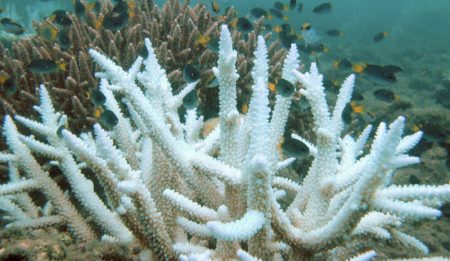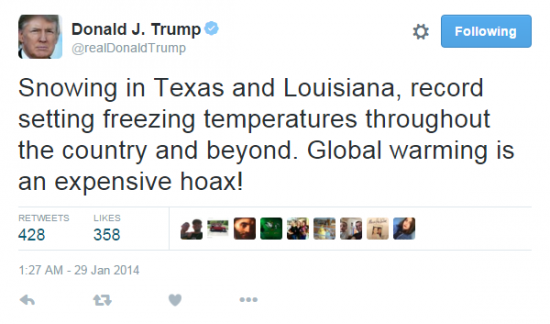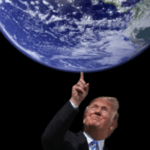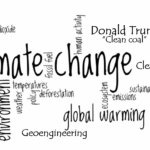December 31, 2016 – With the year coming to an end it seems appropriate to look at the issue of climate change and evidence and events we witnessed in 2016 that may be tipping points for the planet:
- Month after month global mean temperatures setting new modern records. By modern I mean the recording of temperatures worldwide that humans have been doing continuously since 1880. Global mean temperatures when averaged out across the planet exceeded late 19th century weather records by 1.2 Celsius (2.2 Fahrenheit) degrees. Scientists when looking at this new pattern of temperatures couldn’t point to any seasonal or serial phenomena from the past that could have been causal agents. The 2015 El Nino event which petered out by mid-spring in the Northern Hemisphere didn’t do to temperatures what past incidents of mid-Pacific warming have done, that is, be followed by cooling. Instead we saw for the first time global mean temperatures continue to rise rather than fall. July was the hottest month ever recorded. August tied it. And in the last month the Arctic saw record warm temperatures that crazily persisted for days with areas just south of the North Pole warmer than Kansas City, Missouri on the same days.
- Sea ice in the Arctic Ocean setting new records not just in extent but also in thickness. 2016 saw the second lowest amount of sea ice recorded since we began observing this phenomenon from satellite images and data collection. And while the ice coverage by September of 2016 reached its low it was also noted by native Inuit and Arctic research scientists that multi-year ice continued to disappear at rates never seen before, replaced by thinner annual sea ice. The amount of loss equaled an area the size of India.The total ice mass lost equaled 3.8 million square kilometers (1.48 million square miles). The heat wave that struck the Arctic in late November and repeated in December actually caused the seasonal regrowth of sea ice to stop and reverse.
- Land-based ice sheets and neighbouring ice shelves in Antarctica showing evidence of warming. The Antarctic Southern Ocean’s ice coverage has largely appeared unaffected by planetary warming. In the southern continent instead manifestations warming evidence can be seen in the behaviour of the land ice and ice shelves. For example in East Antarctica at the foot of Totten Glacier its ice shelf lost close to 80 billion tons of mass with thinning close to 10 meters (32 feet). The cause, the invasion of warmer ocean water circulating under the ice shelf causing rapid melt. Another example in the Antarctic Peninsula could be seen at the Larsen C ice shelf which developed a 112 kilometer (70 mile) crack, more than one-half kilometer deep (a third of a mile), and over 90 meters (300 feet) wide. The crack is expanding and lengthening and when it reaches to its full extent will calve an iceberg as large as the state of Delaware into the Southern Ocean. Both of these changes to ice abutting the continent point to decreasing instability. Ice shelves, which are the safeguards that keep Antarctica’s ice sheets from flowing en masse into the Southern Ocean, are at risk. Now that it is summer in the Antarctic I suspect we will receive even more compelling evidence from scientists studying climate change in the southernmost continent of our planet.
- The worst coral bleaching ever witnessed in Australia’s Great Barrier Reef. More than 90% of the reef saw bleaching events and one-third of the corals died. The damage to-date extends over 700 of the reef’s 2,300 kilometers (1,400 miles). The die off effected two-thirds of shallow-water corals over an eight month period. Was the El Nino a contributing factor? Past El Nino events have often triggered been coral bleaching. But once an El Nino ends cooler water leads to coral recovery. The difference this time has been the duration of warming which is significantly longer than past events. The northern end of the reef has experienced multiple decade damage with reef-dependent sea life including fish, crustaceans and bivalve populations expected to crash.
- Electing a climate change denier to the position of President of the United States. Donald Trump, singlehandedly, may be the most significant climate change story of 2016. If he is true to his words, that climate change is a “hoax,” then his election, the people he appoints and the policies he enacts, could prove catastrophic. He may pull the United States, the world’s second largest greenhouse gas emitter, out of the Paris Climate Agreement. He has indicated that he wants to take the wraps off of coal mining in his country and remove the regulations that have seen utilities move away from carbon dioxide emitting fossil fuels. His cabinet and judicial appointments could kill all the American emission-cutting initiatives put in place by the previous administration as part of the country’s commitment to mitigate global warming’s impact.
Tipping points represent the unforeseen consequences of external human acts. They tend to confound and complicate already difficult issues. In some cases through counteractions we can reverse their impacts but this usually takes much more time than the amount we used to create them. In the case of point 5 one can only hope that the consequences of this one election is reversible in four years.















